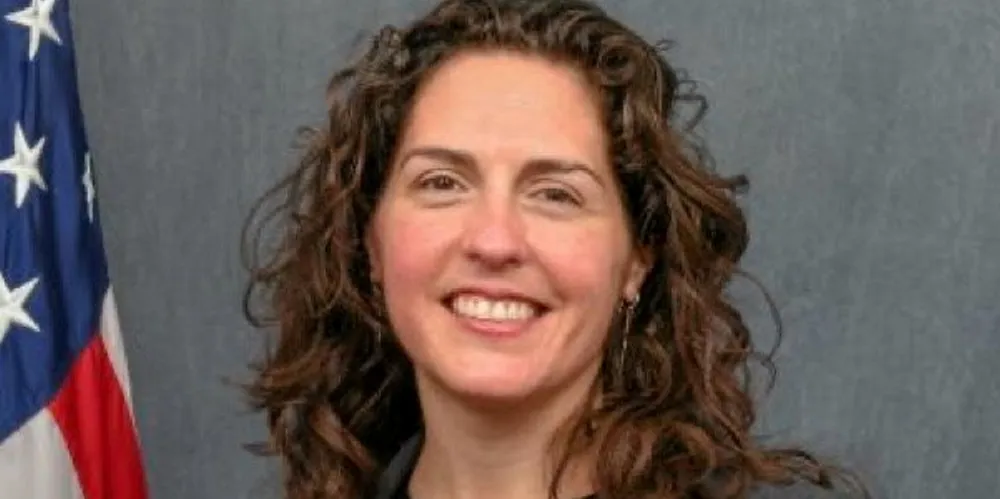'Let's get projects built' | Ex-BOEM chief Lefton says US offshore wind must finish the job
Hired by Joe Biden in the sector's first growth phase, Amanda Lefton is poised to collect a prestigious industry award

For the US offshore wind industry, few leaders beyond President Joe Biden are as recognisable as Amanda Lefton.
For two heady years in 2021 and '22, Lefton helmed offshore energy regulator Bureau of Ocean Energy Management (BOEM) as it lay the groundwork for the 30GW by 2030 goal announced in the early days of the Biden presidency.
At that point, the US industry had seen multiple setbacks in its brief history, most visibly the cancellation of Cape Wind and delay of Vineyard Wind.
Industry roadmap
In 2021, Lefton’s boss, Interior Secretary Deb Haaland, announced a roadmap of at least seven lease auctions to ensure sufficient acreage was on hand to meet the goal, while BOEM set a plan to finish reviewing at least 16 projects by 2025.
Two pilots were up and running – the 30MW Block Island project in Rhode Island state waters and the 12MW Coastal Virginia Offshore Wind research array.
“There were commercial lease sales that were happening and projects that were proposed, but when I came to BOEM, we had not yet successfully approved a single project that went into construction,” she said.
“So that was really the uphill battle that we were facing.”
Before the end of 2021, Iberdrola-controlled Avangrid and Copenhagen Infrastructure Partners’ 800MW Vineyard Wind project off coastal Massachusetts became the US’ first federally approved commercial array.
Orsted and Eversource’s 132MW South Fork for New York followed only months later, and BOEM has since issued environmental approvals for three more projects, including a record of decision (ROD) for Dominion Energy’s 2.6GW Coastal Virginia Offshore Wind array released in October.
The bureau accomplished four lease sales as well, including the $4.37bn auction for 488,000 acres of prime seascape in the New York Bight.
Lefton had spent two years as first assistant secretary for energy and environment in New York and said: “We were pushing very hard for BOEM to advance the New York Bight and I was really pleased to get to BOEM in order to get to work to get that happening as soon as possible.”
Auction innovation
The Bight auction was the first time that credits for supply chain development and community benefits were included as part of bids, which she considers a critical innovation for the sector.
“The bidding credit was really meant to ensure that we are taking some of the funds that were being raised through offshore wind auctions and reinvesting them into communities and reinvesting them into this industry,” she said.
The goal was to “create a domestic based supply chain in the US.”
Passage of the landmark Inflation Reduction Act (IRA) in 2022 likewise turbocharged the sector by offering 30% investment tax credits (ITC) for offshore wind projects, with adders for domestic content and development in economically challenged ‘energy communities’ that can raise this to 50%.
Market turbulence
Despite these legislative and policy advances, the sector has faced increasingly turbulent macroeconomic environment, with surging inflation and interest rates and supply chain turmoil challenging its viability.
Several early projects have been cancelled, and some 9GW of capacity is seeking to renegotiate offtake contracts to reflect the new reality.
A key issue is that early projects are often unable to acquire the critical domestic content adder because the US supply chain is too nascent and cannot deliver American made components.
Also, critical decisions on cable landings and points of interconnection were made before the IRA established criteria for energy communities, resulting again in early projects missing out.
“Let's implement the IRA to support these projects, which is a which is a huge win for all of us in the renewable energy space,” Lefton urged.
“And also, let's deliver what I think is a really important and ambitious agenda from the Department of the Interior to advance these lease sales and really finish the review of these projects that are underway,” she added.
“Actually getting the projects permitted and built is really what's going to build this pipeline and build this industry,” she said.
New horizons
Lefton left the regulator in February of this year and is now with German energy firm RWE as director of its East Coast portfolio.
RWE has emerged as a serious player in the US sector, taking acreage in the New York Bight, California, and Gulf of Mexico, where it was the sole winner of a lease facing Louisiana after only two rounds of bidding.
She confirmed that the developer is exploring opportunities in the central Atlantic and the Gulf of Maine.
Her focus with RWE is “making sure that we're getting steel in the water and that we're doing it the right way.”
For her accomplishments as BOEM director, Lefton is being honoured with Oceantic Network’s (formerly Business Network for Offshore Wind) Heronemus Award for Outstanding Achievement for her contributions in advancing the sector.
The Heronemus Award, named in honour of William Edward Heronemus (1920 – 2002), known as the “father of modern wind power”, is the highest award given at Oceantic's Ventus Gala and recognises an individual who has contributed significantly to the expansion of offshore wind energy.
(Copyright)